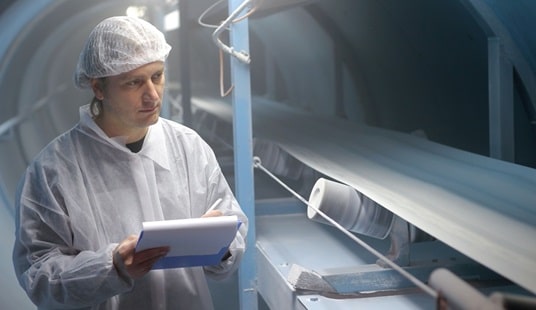Calibration is an essential process that ensures precision and consistency in the food and beverage industry. It involves fine-tuning equipment, ingredients, and techniques to achieve the desired taste and quality of a product consistently. Calibration is not only limited to scientific instruments; it also applies to culinary tools such as ovens, grills, refrigerators, mixers, and weighing scales.
In this article, we will delve into how calibration elevates the food and beverage experience for both customers and businesses.
The Importance of Calibration in the Food and Beverage Industry
The primary goal of calibration is to achieve accuracy and precision in measurements, which are crucial elements in the food and beverage industry. Consistency in taste, texture, and presentation is vital to maintaining customer satisfaction and loyalty. For businesses, calibration ensures efficiency, cost-effectiveness, and food safety. Let’s explore these benefits in detail.
Consistency in Taste and Quality
One of the most significant advantages of calibration is its ability to deliver consistent results, especially when it comes to taste and quality. In the food and beverage industry, customers expect their favorite dishes or drinks to taste the same every time they visit a restaurant or purchase a product. Calibrating equipment and ingredients helps achieve this level of consistency, resulting in satisfied and loyal customers.
Efficiency and Cost-Effectiveness
Calibration also plays a crucial role in improving efficiency and reducing costs for businesses. When equipment is calibrated, it operates at its optimal performance, which means fewer mistakes and reworks. It also prolongs the lifespan of equipment, reducing the need for frequent repairs or replacements. This translates to cost savings in the long run and an increase in overall efficiency.
Food Safety
In addition to taste and cost considerations, calibration also plays a significant role in ensuring food safety. With precise measurements, businesses can accurately track ingredients’ quality and quantity, reducing the risk of contamination and foodborne illnesses. It also helps maintain the integrity and quality of products, which is critical in today’s health-conscious society.
The Calibration Process in the Food and Beverage Industry
So, how exactly does calibration work in the food and beverage industry? Here are some steps that businesses typically follow:
1. Identify Critical Control Points
The first step in the calibration process is to identify critical control points, which are specific areas where measurements are crucial. These can include ingredients’ weight, temperature, pH levels, and cooking times.
2. Use Standardized Tools and Procedures
Next, businesses use standardized tools and procedures to calibrate their equipment and ingredients. This involves using certified instruments and methods that have been verified for accuracy and precision.
Digital pressure gauges, for example, are commonly used in the calibration of equipment like autoclaves and pasteurization systems to ensure that pressure levels are precise. This level of specificity in calibration procedures ensures that products are consistent in quality and safety.
3. Monitor and Record
The final step in calibration is to regularly monitor and record data. This helps businesses keep track of their equipment’s performance over time, identify any issues that may arise, and make necessary adjustments to maintain accuracy.
The Impact of Calibration on Customer Experience
For customers, the impact of calibration may not be immediately noticeable, but it plays a significant role in their overall experience. Here are some ways calibration elevates the food and beverage experience for customers:
- Consistency: As mentioned earlier, calibration ensures that products taste the same every time they are served, providing customers with a consistent and satisfying experience.
- Quality and Safety: With precise measurements and strict adherence to standardized procedures, customers can trust that the food and beverages they consume are of high quality and safe for consumption.
- Efficiency: Calibration helps businesses operate more efficiently, which can result in faster service and less waiting time for customers.
Conclusion
In conclusion, calibration is a crucial aspect of the food and beverage industry that has a significant impact on both customers and businesses. By ensuring precision and consistency in taste, quality, and safety, calibration elevates the overall experience for everyone involved. From the measuring of ingredients to cooking, plating, and serving, every step in the process can benefit from proper calibration. So, the next time you enjoy a delicious meal or drink, remember that calibration played a vital role in making it possible.

Santosh Kumar is an editor at unfoldstuffs.com and a professional content writer. With years of experience he is passionate for creating engaging, informative and impactful topics.









